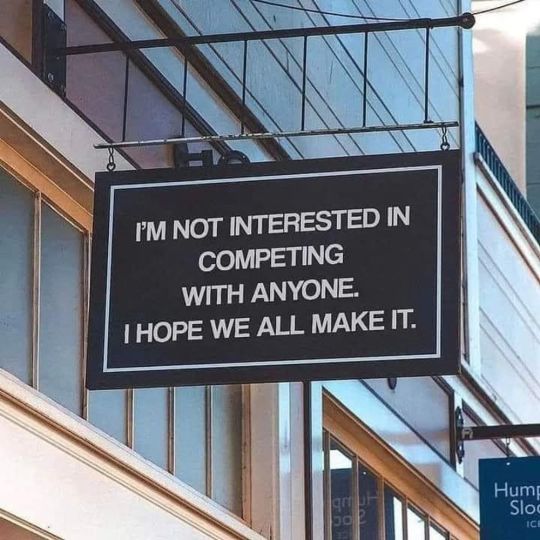Text
magical girl transformation but i just rapidly go through the 5 stages of decomposition
34K notes
·
View notes
Text
eventually one has to come to terms with the fact that "conceive of myself as a person capable of tackling difficult things" is an achievable goal toward which one can take concrete steps whereas "have things be easy" is Not
11K notes
·
View notes
Text
the "came back wrong" trope except like... they didnt. like this mad scientists wife died, and so he studied necromancy, brought her back, and she came back and it all worked. like she came back exactly the same as she was before with literally no difference. but the scientist guy is like "oh no... what have i done.... shes Different now!!!! she came back Wrong!!!!" and shes just like. chilling. reading a book. cooking dinner. shes just so so normal but in the guys mind hes like "oh shes soooo weird" but shes just normal
293K notes
·
View notes
Text
set aside all urges towards prescriptivism, answer with your grammar heart not your grammar head
#I use they/them when speaking or writing in English and yeah I'd pick the second option because it's referring to a single person#polls
148 notes
·
View notes
Text





deltarune x revolutionary girl utena
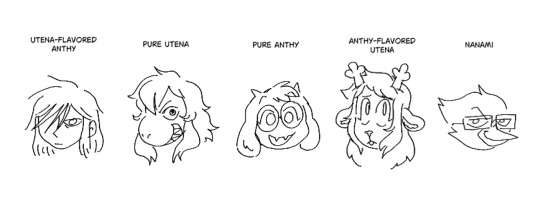
6K notes
·
View notes
Text
I've decided if people are going to call male characters babygirl then I can do it the other way around for female characters. She's my man now. That woman is my boyfriend. My boytoy even.
90K notes
·
View notes
Text

Everyone: Please please please don't write your books in Google Docs. Frankly don't use Google Drive for personal stuff.
Their terms of service say they take down stuff like content related to terrorism and trafficking, but this Google Sheet was literally a list of movies I'd watched this year and books I'd read.
65K notes
·
View notes
Text
People will really say things like "This is so sad Susie doesn't know the real Kris :(" as if we didn't watch them clink their glasses and immediately start pouring juice into each other's mouths with not a single word passing between them
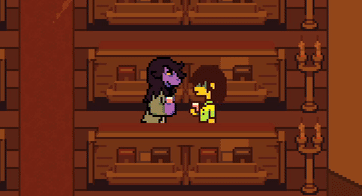
#deltarune#deltarune spoilers#game of the year 2025 if you ask me#Susie and Kris are platonic soulmates and this is why I love their friendship SO MUCH#:D
17K notes
·
View notes
Photo




Do know what EYE LEVEL is? No? You should!
by Thomas Romain (Space Dandy, Code Lyoko, Basquash, Cannon Busters)
31K notes
·
View notes
Photo




The eye level position in your picture (angle) !
by Thomas Romain (Code Lyoko, Basquash!, Space Dandy, Cannon Busters). The horizon line by your view, this time. (Part 1)
2K notes
·
View notes
Photo




How to draw a street that looks good (to me at least!)
by Thomas Romain (Space Dandy, Code Lyoko, Basquash!, E.P. Kiss Dum, Cannon Busters). Another great tutorial !
38K notes
·
View notes
Note
Just curious on how you approach composition and perspective. I feel as if sometimes I think too hard, not really about what to draw but how to draw it and make it look interesting. The comic panels you have been doing are amazing. Any tips/references on improving my knowledge of composition and perspective? What do you think about as you lay your pencil on the drawing paper? what goes through your mind?
*STANDARD DISCLAIMER* I’m not handing down life lessons or trying to assert that there’s a ‘correct way’ to draw. I’m just trying to make perspective more approachable for thems that want to tackle it.
Okay. Let’s do this.
1. Understand what perspective is and what it’s for. Stay away from rulers while you get comfortable.
Everyone struggles with perspective because 1. it’s not well or widely taught and 2. artists tend to see linear perspective as a set of rules rather than a set of tools.
Linear perspective is a TOOL we use to create and depict SPACE. That’s it. That’s all it is. Your goal is not to draw in ‘accurate linear perspective.’ Stay away from the ruler and precision for as long as you can. Your goal is to create the illusion of three-dimensional space on a two-dimensional surface. Perspective is just a tool to help you construct and correct that space.
2. Know in your bones that you can ONLY learn to draw in perspective through physical practice. There is no other way.
Grab some paper and draw with me. If you match me drawing for drawing you will be more fluent in linear perspective and spatial drawing by the end of this post. Unfortunately if you don’t, you won’t be.
3. Sketch around in rough perspective. NO RULERS.

So let’s make some simple space. let’s start with a two dimensional surface…
K. We have a flat, 2D surface. Let’s create some depth by putting a vanishing point in the middle, and having parallel lines converge towards it. Make a gridded plane inside that space.

Good. Let’s make that space meaningful by adding a dude and a road or something. (Again, parallel ‘depth lines’ will converge into the vanishing point along the horizon)

And now we have the rough illusion of some space. I didn’t use any rulers, and it’s not perfectly accurate, but we got our depth from that vanishing point right in the middle of the page. And since we have a little dude in there, we’ve got human scale, which allows us to gauge the size of the space we’ve created. Gives it meaning.

You need people or cars or some recognizable, human-scale THING in there as a frame of reference or your space won’t mean much to your viewer. Watch. We can make that same basic space a whole lot bigger like this:
Same vanishing point in the same place, completely different scale, and a totally different feeling of space. Cool, right?
3. Sketch around in rough perspective MORE. STAY LOOSE.
See what sort of spaces and feelings you can create with vanishing points and gridded planes on a post-it or something. Super small, super rough. Feel it out. Pick a vanishing point or lay out a grid in perspective, and MAKE SOME SPACE. Do it. Draw, I don’t know, a lady and her dog in a desert. I’ll do it, too.

Good job. LOOK AT YOU creating the illusion of space! This is how you’ll thumbnail and plan anything you want to draw in space. All of my drawings start this way. I think about how I want the viewer to feel and then play around with space and composition until I find something that works.
Once you have a sketch you like, and space that you feel, THEN you can take out the ruler and make it more accurate and convincing.
4. Draw environments from life.
I cannot stress this enough. Draw the world around you, try to draw the shapes and angles as you see them, and you will ‘get’ how and why perspective is used. Use something permanent so that you’ll move fast and commit. I usually use black prismacolor pencil.
You’ll learn or reinforce something with every drawing. I learned a lot about multiple vanishing points from this drawing:

Learned from the receding, winding space I tired to draw here:

Layered, interior spaces:

You get the idea.
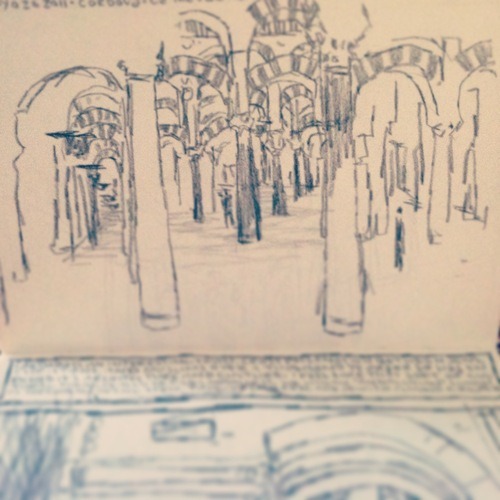
Life drawing will also help you develop your own shorthand and language for depicting textures, materials, details, natural and architectural features, etc. Do it. Do it all the time. Go to pretty or interesting places just to draw them.
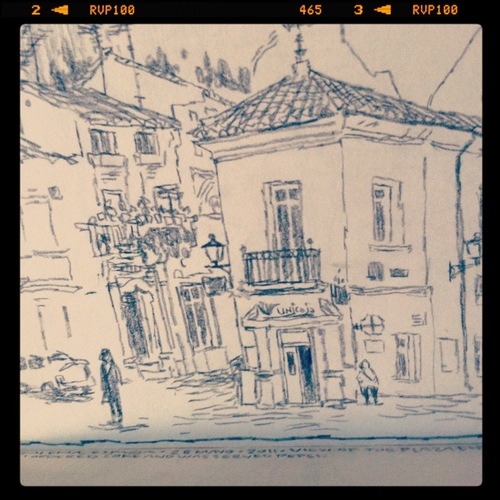
Take a second and just draw a quick sketch of whatever room you’re in.
5. Perspective in formal Illustration: apply what you’ve learned.
1. I always start with research. For this particular location I looked at Angkor Wat.
2. Once I had enough reference, I did a bunch of little thumbnail sketches with a very loose sense of space and picked the one I liked best.
3. Scanned the thumbnail and drew a little more clearly over it. Worked out the rough space before using formal perspective.

4. Reinforced the space with formal perspective. I dropped in pre-made vanishing points over my drawing. If I were drawing in real media here’s where I’d get out the ruler to sketch in some accurate space.
5. Drew the damn thing. Because I do my research, draw from life, and am comfortable drawing in perspective, I can wing it. I just sort of ‘build’ the ruins freehand in the space I’ve established, keeping it more or less accurate, experimenting and playing with details along the way. I erase a lot, too, both in PS and when drawing in pencil. Keeps it fun for me.
And that���s what I know about composition and perspective. If you want more formal instruction on perspective and it’s uses, you can use John Buscema’s How to Draw Comics the Marvel Way. Or If you want to get really intense about it, Andrew Loomis can help you
42K notes
·
View notes
Text
My 3 Unfortunately-Secret Programs for Illustrators
There are a few programs I use on an almost daily basis as an artist and illustrator which I find invaluable, but that seem to be unfortunately more secret than they deserve to be. Which is too bad, because they solve a lot of small workflow problems that I think a number of people would find useful!
I’ll keep this list limited to my big three, but it is organized in order of usefulness. (And incidentally of compatibility, as the latter two are Windows-only. Sorry! Please do still check out PureRef though, Mac users.)
1. PureRef
PureRef is a program specifically designed to make it easier to view, sort, and work with your references. I actually put off downloading it initially because it seemed redundant– couldn’t I just paste the refs into my PSD files? Indeed, the only real barrier to working with PureRef is that learning the keyboard shortcuts and the clicks to move around the program takes a little while. But getting over that hump is well worth it, because it has some distinct advantages over trying to organize your refs in your actual art program.

Firstly, you’re no longer bogging down your actual PSD file with extra layers, nor having to fight with said layers at all– PureRef has no layer panel, so you never have to scramble to grab the right one. All images you paste into the program retain their original resolution data, so you can resize, rotate, crop, etc as needed without distortion. If you find yourself needing to adjust the values, color, etc of a ref image, you can just copy paste it into Photoshop, make your adjustments, and copy paste it back into PureRef.
The other great advantage is that you can toggle the program as ‘Stay On Top’ and keep it above Photoshop (or whatever else)– which was always a problem when trying to make a reference collage in a separate PSD file. I find that I just don’t look at my references as much as I should when they are on a second monitor, and this solves that problem.

I’ve used it religiously for about a year now, creating a new PureRef file for every illustration I do, as well as a few for specific characters, cultures, or settings in personal projects. As you can see in the example above, I like to sort my images into little clusters or ‘islands’ of specific content, so that I can easily scroll out to see the entire reference map, then zoom in to the relevant cluster easily.
There is one big tip I would suggest for using this program, if you have the harddrive space: As soon as you get it, turn on the ‘Embed local images in save file’ option. This will make your PureRef files bigger, but you’ll never have to deal with a ‘broken link’ if you move around the source files you originally dragged in.
2. Work Timer
This is such a simple little app that it doesn’t have a very formal name, though I think of it as ‘Work’ or ‘Work Work’ (for some reason.) It’s a timer that counts when your cursor is active in any (of up to 3) program you set it to count for, and stops counting when you change programs or idle. No starting, pausing, stopping, or forgetting to do any of those three things.

I use this one to accurately track my hours, both to inform myself and for commissions or other client work. At the end of a work session, I take the hours counted and add them to the hours I’ve already spent on that image in a spreadsheet.
I have it set to count my three art programs (Photoshop, Painter, and Manga Studio), so based on the settings I use, it doesn’t count time that I spend doing relevant work in my browser (such as looking up an email to double check character descriptions or ref hunting), so to counter that, I set the ‘Timeout’ option in it’s menu to 360. This means it will count to 360 seconds of cursor inactivity before it considers me idle and stops counting. Since it instantly stops counting if you switch to ‘non-work’ a program, I figure this extra time just about cancels out relevant time that it ignores in ‘non-work’ programs by counting an extra minute or so when I walk away from the computer to grab some water or what-have-you.
3. Carapace
I use Carapace the least of these three, since my work doesn’t often have a need for creating perspective lines. But when there is architecture involved in something, this proves invaluable in simplifying that process.

Carapace lets you copy paste an image into it, and then drop in vanishing points and move them around to create perspective lines. (Though you’ll want to scale down your full res drawing or painting a bit to avoid lagging the program.) Like with PureRef, fighting the shortcuts is the worst part of it, though for myself it’s more of an issue in this program because I don’t use it often enough to remember them. Still, it gets the job done, and it’s easy to adjust the points to feel things out until you get them ‘right’. Then you just copy and paste the grid back into your art program and you’ve got that information to use as need be on its own layer.
Of course, using Carapace isn’t a replacement for actually knowing how perspective works– you still have to have a sense of how far apart the vanishing points should be placed to keep things feeling believable. But it sure does save you a lot of trouble once you do have that knowledge.

So, there are my big three recommendations for programs to help your art workflow. I hope people find them useful– if you do, please share so that they climb a little higher out of their unwarranted obscurity! And if you’ve got a favorite tool like this that I didn’t cover, feel free to share it in the comments. I know I’m curious to see what else is out there, too. Also, if Mac users have any suggestions for programs that fill similar functions, feel free to share there as well!
My Website • Store • Commissions • Instagram • Twitter • Deviantart
68K notes
·
View notes
Text
people aren't even getting a little bit genghis khan anymore. you guys used to love getting a little bit genghis khan
18K notes
·
View notes
Text








A rainy day. Värmland, Sweden (July 15, 2020).
401 notes
·
View notes
